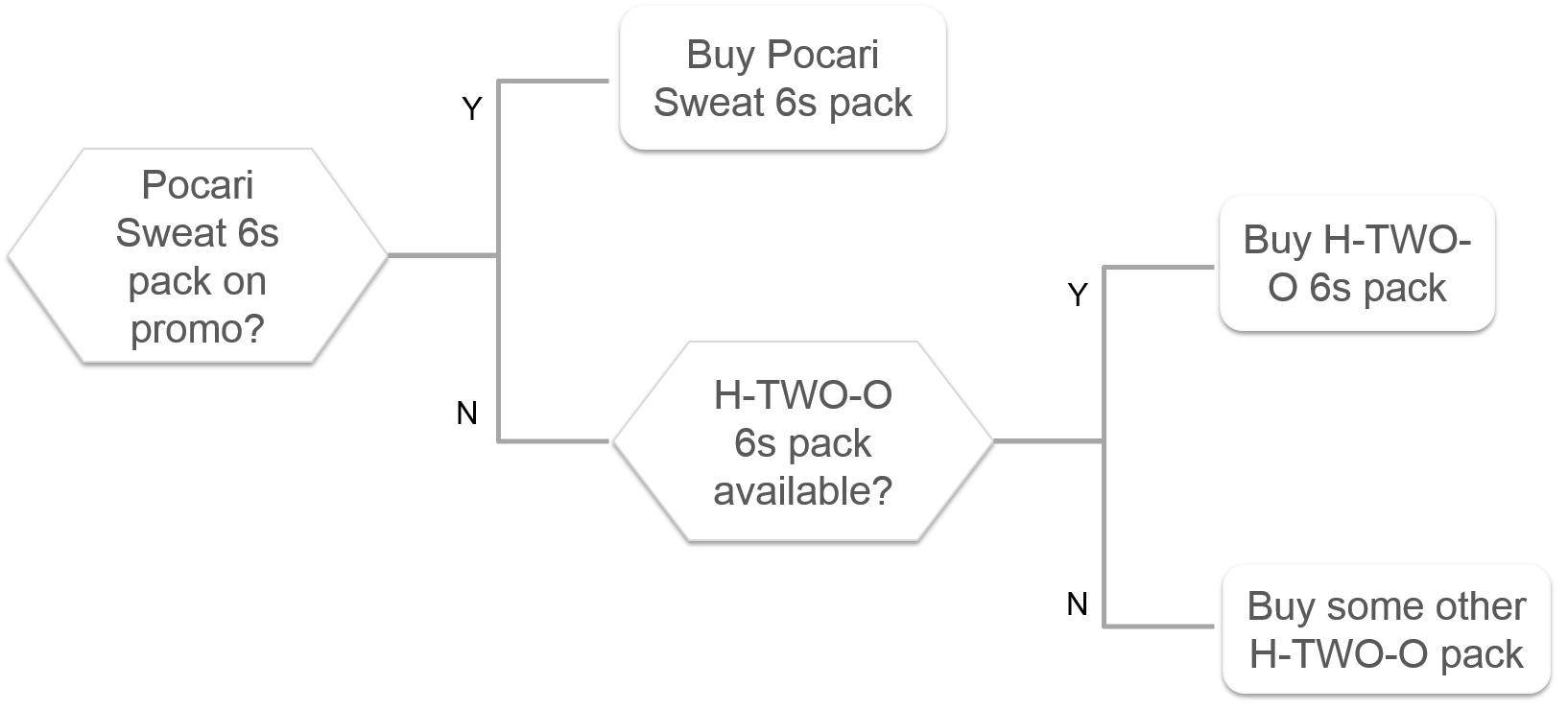-
Segmentation
Schizophrenic Consumers
Need States
Segmentation Methods
A Priori Segmentation
Post hoc Segmentation
Segmentation Analysis
Targeting
- Segmentation
- Qualitative Research
- Quantitative Research
- Customer Satisfaction and Customer Value
- Consumer Panels and Consumer Analytics
- Big Data and Consumer Analytics
- Marketing Education
- Is Marketing Education Fluffy and Weak?
- How to Choose the Right Marketing Simulator
- Self-Learners: Experiential Learning to Adapt to the New Age of Marketing
- Negotiation Skills Training for Retailers, Marketers, Trade Marketers and Category Managers
- Simulators becoming essential Training Platforms
- What they SHOULD TEACH at Business Schools
- Experiential Learning through Marketing Simulators
-
MarketingMind
Segmentation
Schizophrenic Consumers
Need States
Segmentation Methods
A Priori Segmentation
Post hoc Segmentation
Segmentation Analysis
Targeting
- Segmentation
- Qualitative Research
- Quantitative Research
- Customer Satisfaction and Customer Value
- Consumer Panels and Consumer Analytics
- Big Data and Consumer Analytics
- Marketing Education
- Is Marketing Education Fluffy and Weak?
- How to Choose the Right Marketing Simulator
- Self-Learners: Experiential Learning to Adapt to the New Age of Marketing
- Negotiation Skills Training for Retailers, Marketers, Trade Marketers and Category Managers
- Simulators becoming essential Training Platforms
- What they SHOULD TEACH at Business Schools
- Experiential Learning through Marketing Simulators
Segmentation Methods
“If you’re not thinking segments, you’re not thinking.” — Theodore Levitt.
The development of your brand’s marketing strategy, in a nutshell, entails choosing which segments to target, differentiating the brand to appeal to the segments, and positioning it distinctly in the minds of target consumers.
Market segmentation is typically defined as the process of partitioning a market into groups of consumers with distinct needs and preferences. For many categories it might be better to describe it as the process of partitioning a market into groups of consumers’ need-states, reflecting distinct needs, preferences and circumstances. The same consumer often falls into multiple segments, her preferences varying according to her need-states.
Consumer Needs
What exactly constitutes a need? What are the factors that influence consumer buying behaviour? This by itself is big topic, one that is covered in brief, in most marketing management texts. Kotler (2009) describes four underlying influences — cultural, social, personal and psychological. An individual’s social class, social network, family, income class, occupation, lifestyle, age, generational cohort, her level on Maslow’s needs hierarchy … all these factors and more, shape her beliefs and attitudes. These beliefs and attitudes, coupled with her mood, emotion or circumstance, drive her motivations and buying behaviour, at any moment in time.
The gamut of influences, moods, emotions, and circumstances etc. that drive buying behaviour make segmentation seem a daunting exercise. Yet while the possibilities seem endless all underlying influences do not necessarily shape people’s beliefs and attitudes in such a way that it changes their buying behaviour. Depending on the nature of the product category, some influences are more important than others.
Mental Heuristics
Confronted with a whirlwind of information and hundreds of choices in each category, consumers develop simple decision rules or mental heuristics. For low budget purchasing decisions as in FMCG, these rules can be fairly straightforward.
For instance, “I always buy Lipton Yellow Label tea”. Or for instance the set of rules depicted in Exhibit 3.1, where the consumer prefers Pocari Sweat when it is on promotion, otherwise he buys H-TWO-O. Most brand choice decisions are based on similar, simple decision rules. It saves time and energy.
Rules make shopping behaviour habitual in nature; more often than not a consumer purchases the same set of her usual FMCG brands. Yet there are moments that may trigger a change. Whether it is disappointment with her existing brand, the launch of a new product, the incidence of a stockout, an attractive promotional offer for a competing product or a host of other factors, from time to time she is induced to break out of her habits and try something different. These moments represent the window of opportunity that competing brands seek to exploit.
For segmentation purposes, marketers need to understand the heuristics that dictate consumers’ buying habits. What sets of rules apply for each of the different need-states? How do they evolve? What factors influence the formation of the rules? Are the rules backed by an emotional commitment to the brand? What motivations trigger changes to the rules?
The diversity of rules reflects the heterogeneous nature of markets. Marketers can benefit from an understanding of how underlying cultural, social, personal and psychological factors influence the individual’s different need-states, and how they in turn lead to the formation of rules.
Forms of Segmentation
Segmentation should be based on consumer needs. The term however is broadly used to describe various ways of classifying consumers or products. For example, take demographic segments. It assumes that the needs of consumers vary from one demographic group to another, which might be true, though it may not be the ideal or the best way to segment the market.
The objectives of a segmentation exercise also vary. If the exercise pertains to a specific marketing mix decision, the segments are crafted in the context of that element of the mix. For example, a marketer interested in crafting consumer price segments, would use appropriate variables and methods for this purpose.
There are a variety of methods and numerous techniques to segmenting markets. Broadly speaking, these methods may be classified as a priori, where the segments are determined in advance; or post hoc where analytic techniques are employed to carve segments out from the data.
Previous Next
Use the Search Bar to find content on MarketingMind.
Contact | Privacy Statement | Disclaimer: Opinions and views expressed on www.ashokcharan.com are the author’s personal views, and do not represent the official views of the National University of Singapore (NUS) or the NUS Business School | © Copyright 2013-2026 www.ashokcharan.com. All Rights Reserved.






